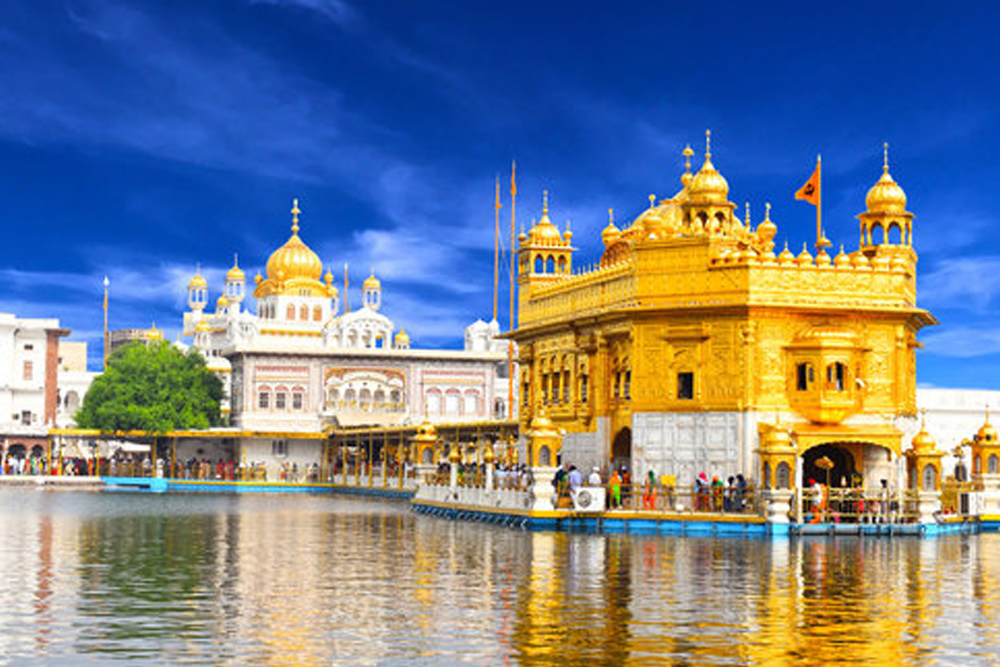The Golden Temple: Emblem of Sikh Faith and Unity
- Home
- The Golden Temple: Emblem of Sikh Faith and Unity
The Golden Temple: Emblem of Sikh Faith and Unity

The Golden Temple, also known as the Harmandir Sahib or Darbār Sahib, stands as a revered gurdwara nestled in the city of Amritsar, Punjab, India. Rooted deeply in Sikhism, it holds paramount spiritual significance and is regarded as one of the holiest sites alongside Gurdwara Darbar Sahib Kartarpur and Gurdwara Janam Asthan.
Constructed around a man-made pool completed by the fourth Sikh Guru, Guru Ram Das, in 1577, the Golden Temple's rich history is intertwined with Sikh faith and resilience. Despite facing destruction multiple times by Mughal and Afghan armies, it was rebuilt and embellished under the patronage of Maharaja Ranjit Singh, earning its moniker due to the stunning overlay of gold leaf on its sanctum.
Spiritually and symbolically profound, the Golden Temple embodies Sikh ideals of equality and inclusivity, evident in its four entrances welcoming people of all faiths and backgrounds. The gurdwara complex, including the Akal Takht and a community kitchen (langar) serving thousands daily, epitomizes Sikh values of service and compassion.
While marred by conflicts such as Operation Blue Star in 1984, the Golden Temple remains a beacon of peace and unity, attracting over 150,000 worshippers daily. Its nomination as a UNESCO World Heritage Site underscores its global significance as a place of spiritual solace and cultural heritage.
Trending Services For More Services Click here

News Portal Website Development Company In India
Website Designers

Edit connect you to customers
Business

Ram Lal Khachodi wala
Food and beverages

Neelam Sales Agency
Wallets

Neelam Sales Agency
Food and beverages

Trimwebsolutions 123
Website Designers

Trimwebsolutions 123
Sofas

Trimwebsolutions
Website Designers

Trimwebsolutions 123
Sofas

website design
Wallets

Neelam Sales Agency
Monitors

Khushboo Sales Agency
Fashion

website design
Sunglass

Accounting Service
Professional Services

Website Design and Development Company
Website Designers

Website Design and Development Company
Website Designers

Website Design and Development Company
Website Designers

Amit Repair Shop
Repairs

World Wide Printers
Printers

NHL Electro Hub Electronic Goods Showrooms
Electronics

Neelam Sales Agency
Computers

Bansal Properties
Business

Fresh & Fine Restaurant
Restaurant

High On Food
Restaurant

Lord of the Drinks East
Restaurant

Breakin’ Brew
Restaurant

Desi Punjabi Rasoi
Restaurant

Maini's Green Leaf Maini's Green Leaf
Restaurant

The Barbeque Company
Restaurant

Promenade - Indian Restaurant
Restaurant

The Salt Cafe Kitchen & Bar
Restaurant

PUNJABI CAFE
Restaurant

PUNJABI CAFE
Restaurant

Anardana East Delhi
Restaurant

The Yellow Chilli
Restaurant

BARAAMDA KITCHEN
Restaurant

QD's Restaurant
Restaurant

The Barbeque Company
Restaurant

Barsoom frat House
Restaurant

Haldiram's - Lajpat Nagar
Restaurant

The Big Chill Cafe
Restaurant

Abhishek Restaurant
Restaurant

Olive Bar & Kitchen
Restaurant

In The Punjab in delhi
Restaurant

Tastes of food
Restaurant

Nayak South Indian Foods
Restaurant

Empress Of China
Restaurant

The Clay Oven Restaurant
Restaurant

Barbeque Nation
Restaurant

Dream circle pizza
Restaurant

The Irish House, Nehru Place
Restaurant

Music & Mountains Hillside Cafe
Restaurant

Crazy kitchen
Restaurant

Noire - Live Kitchen
Restaurant

J U G G E R N A U T
Restaurant

FIO - Cookhouse & Bar
Restaurant

Oh! Calcutta
Restaurant

Kiara Soul Kitchen
Restaurant

Olive Bar & Kitchen
Restaurant

Madurai South Indian Food
Restaurant

Branch kitchen and bar
Restaurant

Burma Burma Restaurant & Tea Room
Restaurant

The South Delhi Kitchen
Restaurant




